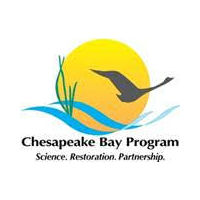
According to preliminary data, an estimated 42 percent of the bay and its tidal tributaries met clean water standards for clarity, dissolved oxygen, and chlorophyll-a between 2015 and 2017. The 5 percent increase from the previous assessment period is due in large part to reductions in chlorophyll-a, an indicator of algae growth, and increases in underwater grass abundance and dissolved oxygen in open waters. New research conducted by Chesapeake Bay Program experts and published in Science of the Total Environment described the changes as “positive and statistically significant trends” in the bay.
A Chesapeake Bay Program news release said the improvements suggest “that the water quality of the bay is improving due to the decades-long effort to reduce nutrient pollution and is more resilient to the impacts of extreme weather.” However, “water quality remains far below 100 percent attainment, with 58 percent of tidal waters still considered impaired.”
Between October 2016 and September 2017, about 240 million pounds of nitrogen, 12.7 million pounds of phosphorus and 4.3 billion pounds of sediment reached the bay—a 0.4 percent, 7 percent and 14 percent decrease from the previous assessment period, respectively.
Based on land uses, anticipated growth and other factors, Virginia is tasked with reducing its amount of all three going into the bay by 2025.
Virginia and other states in the bay watershed—New York, Pennsylvania, Delaware, Maryland and West
Virginia—and the District of Columbia are finalizing their third phase of participation in the bay’s Total Maximum Daily Load program. A TMDL is the calculation of the maximum amount of pollution a body of water can receive and still meet state water quality standards. High levels of those pollutants enter the water from agricultural operations, urban runoff, wastewater facilities, septic systems, air pollution and other sources.
Virginia will present its Phase III Watershed Implementation Plan, or WIP III, to the U.S. Environmental Protection Agency in August.
Virginia agriculture met its 2017 midpoint nutrient reductions for nitrogen and phosphorus under the TMDL program. The state’s permitting program regulates most poultry and swine operations. Virginia also has developed voluntary incentives such as the Resource Management Plan, which encourages non-regulated farmers to implement conservation practices. The state maintains an annual agriculture cost-share program for implementing priority practices such as stream exclusion and cover crops.
Virginia Farm Bureau Federation, the state’s largest agricultural organization, has been involved in the process of developing WIP III, along with other farm and forestry groups.
“We have continued to advocate for adequate, stable and reliable funding for cost-share practices, equitably distributed to meet the bay-related goals; flexibility in implementing conservation practices based on site-specific variations; and more efforts to capture voluntary conservation measures that farmers are implementing,” explained Martha Moore, VFBF vice president of governmental relations. “With the current economic challenges facing agriculture today, harsh mandates will not be successful and will push more farmers into leaving farming.”










